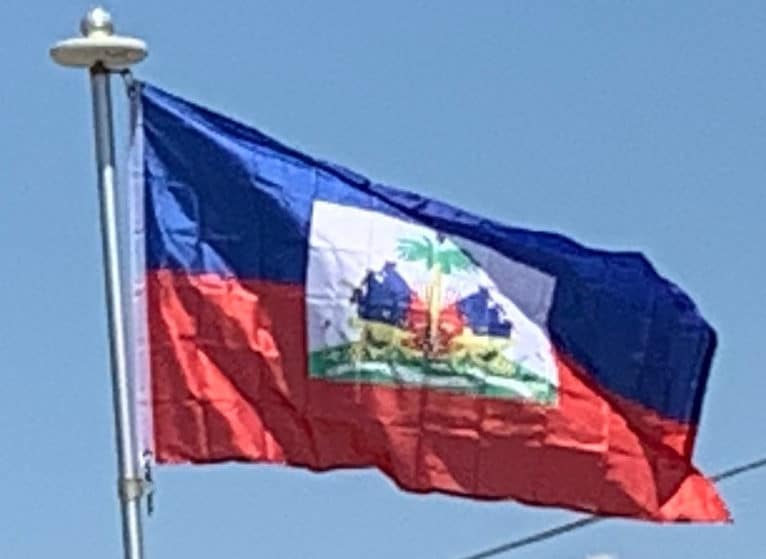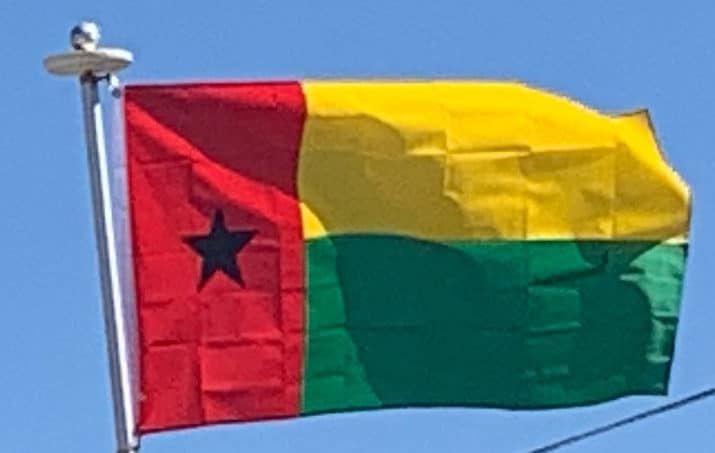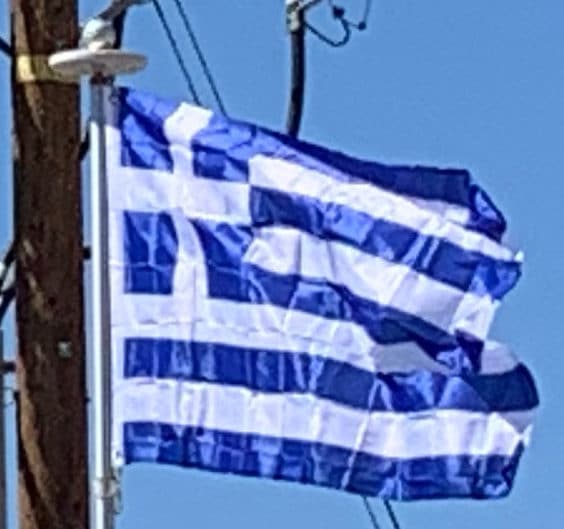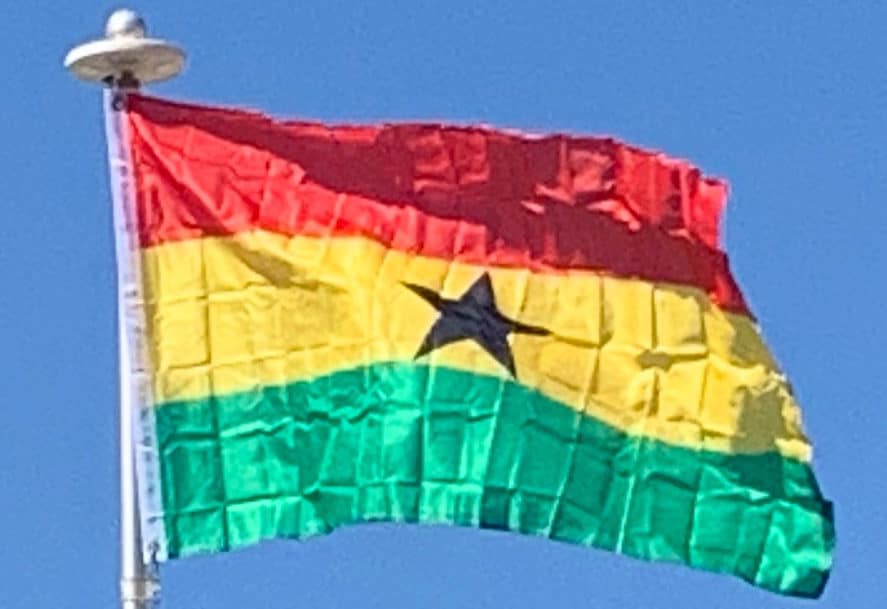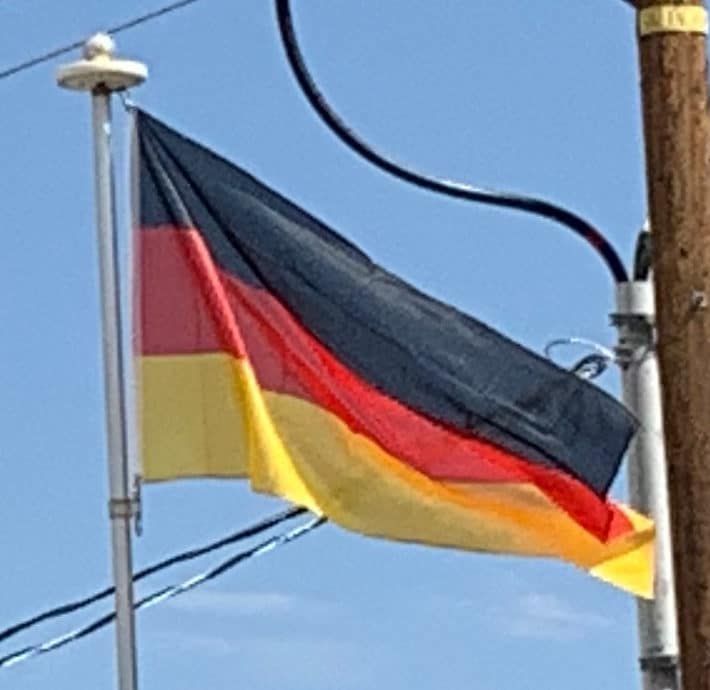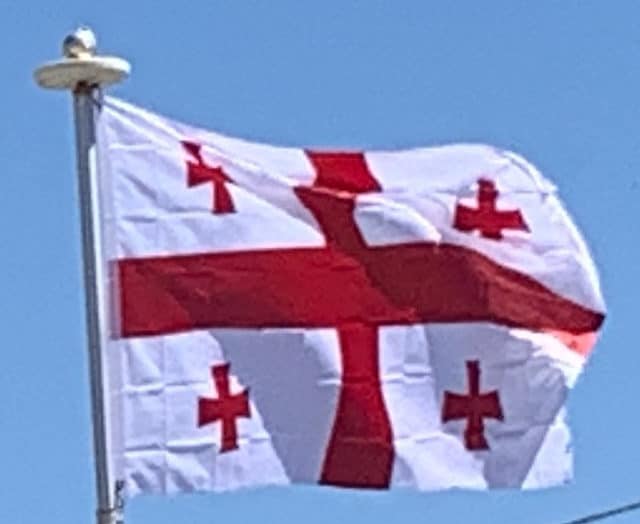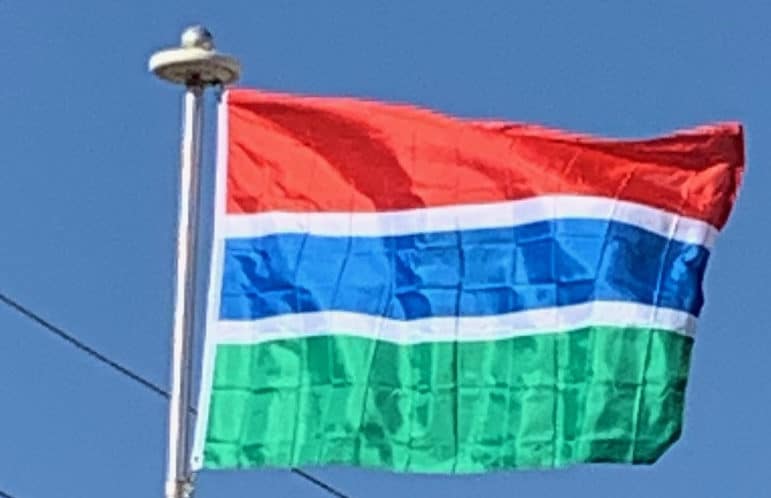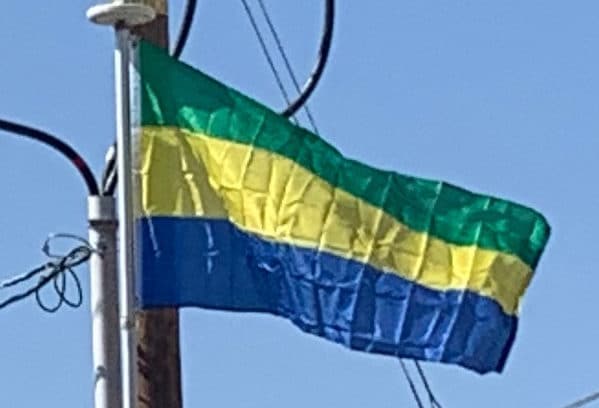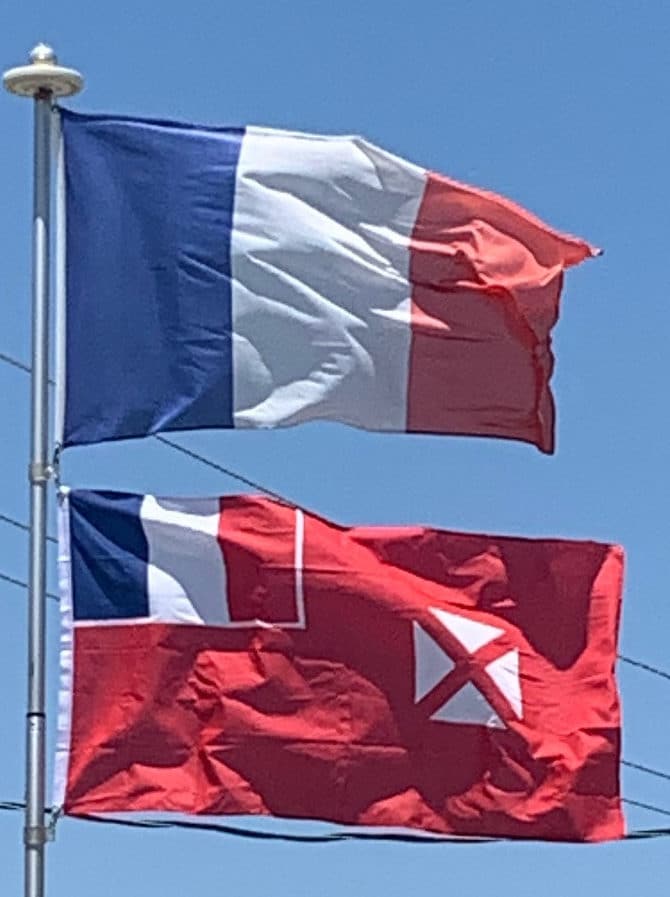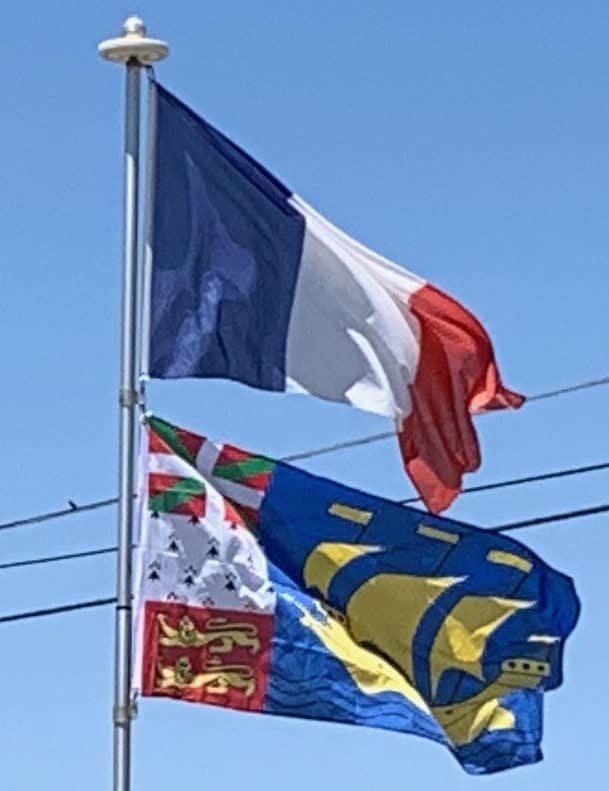Haiti
The flag of Haiti is a bicolour flag featuring two horizontal bands coloured blue and red, defaced by a white panel bearing the coat of arms. The coat of arms depicts a trophy of weapons atop a green hill and a royal palm symbolizing independence. The palm is topped by the Cap of Liberty. The motto L’Union fait la Force (“Unity makes strength”) appears on a white ribbon below the arrangement. The flag of Haiti—along with those of Afghanistan, Costa Rica, Bolivia, Ecuador, and El Salvador—is one of six national flags whose designs incorporate a depiction of the flag itself.
